
Journal — Beauty
Sammy Kewish
14th July 2021
Wellington Coastal landscapes
A recent wild coast hike has left me feeling inspired and humbled to the endurance of nature. Coastal processes bring such free and rugged landscapes, where the life that persists, makes our local coastlines so diverse and special. Let me take you on a journey through the wonderfully wild coastlines that bridge Wellington and Wairarapa.
The Wainuiomata is an unspoiled coastline, in the Wellington region, that stretches around remote farmland and bushland. The northern side of the Wainuiomata coastline meets the Wellington Harbour, where it further connects around to the southern coasts of Turakirae Heads, Wairarapa; Cape Palliser and Tora. (refer to purple zone in map)
Much like Wellingtons rugged coastlines, Wainuiomata is part of the rocky coastal zone influenced by high winds that rip through the Cook Strait.
Wainuiomata’s rocky shores offer much diversity in plant life. With help from free -roaming animals, rustic winds and flowing streams, determined little seeds are catching a ride with nature to carry them home. Seaweed forests are flowing with the tides, harbouring entire ecologies. Waves are crashing on rocks and carving the coastline. There is never a dull moment, always movement.
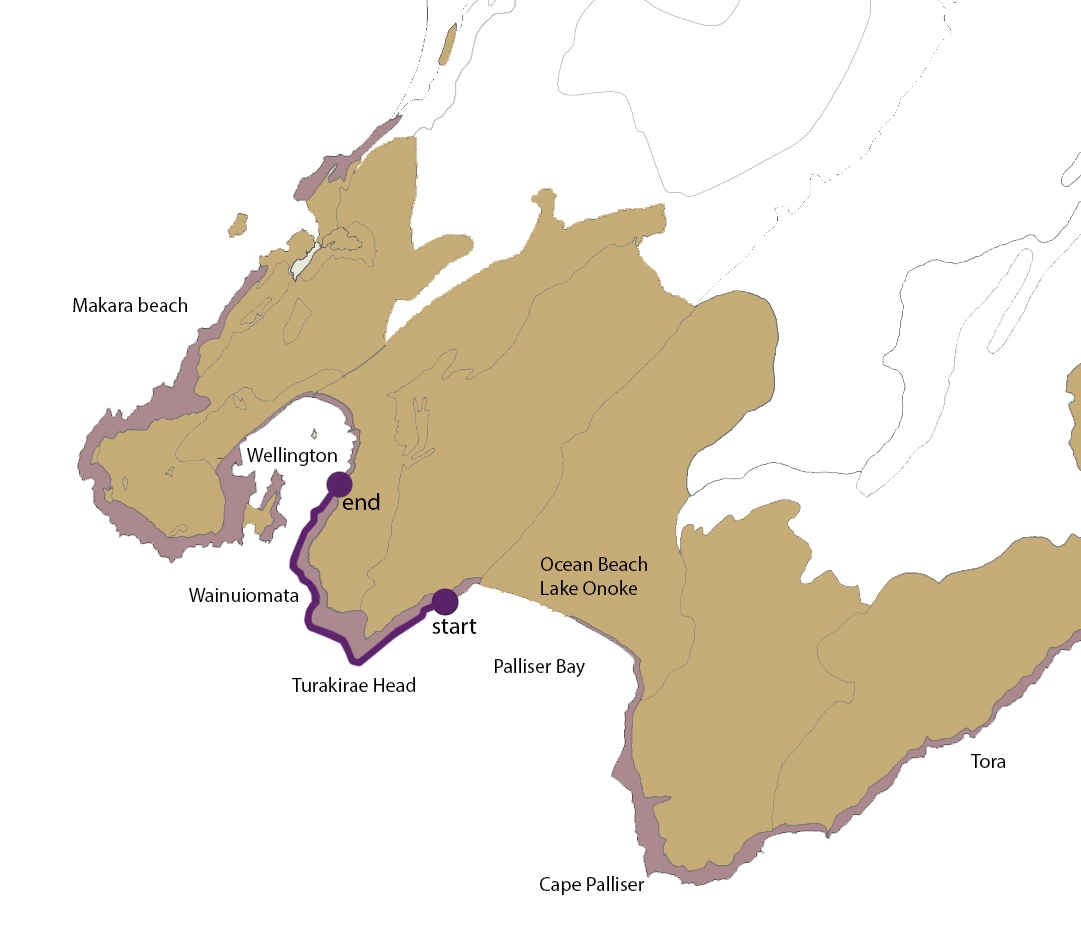
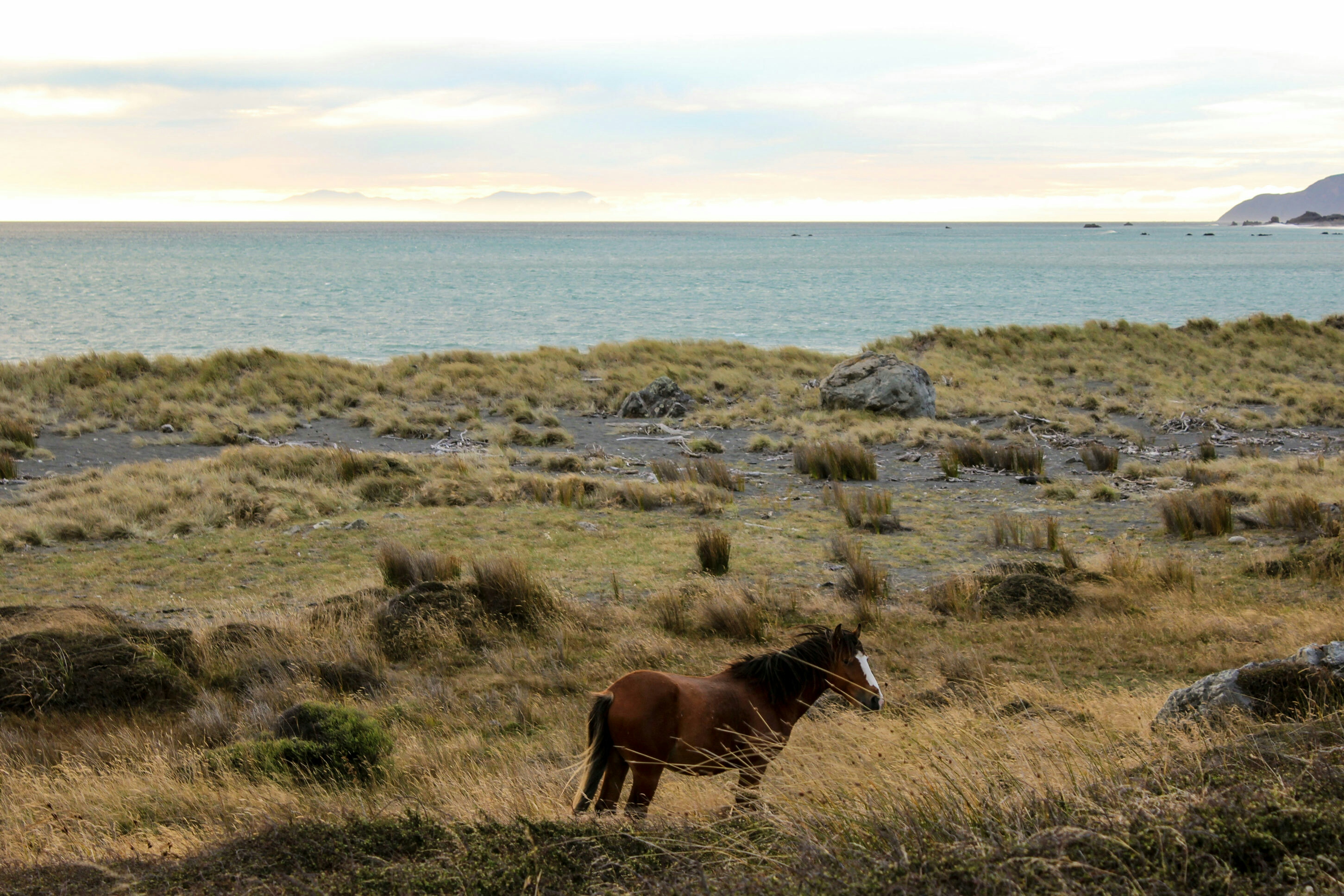

Gnarly, and distinctively influenced by the elements, Wainuiomata is exposed to a diverse range of harsh coastal conditions like the ravenous winds and water currunts. Climate has produced local niches in the landscape, where plant ecologies have found ways to adapt and thrive.
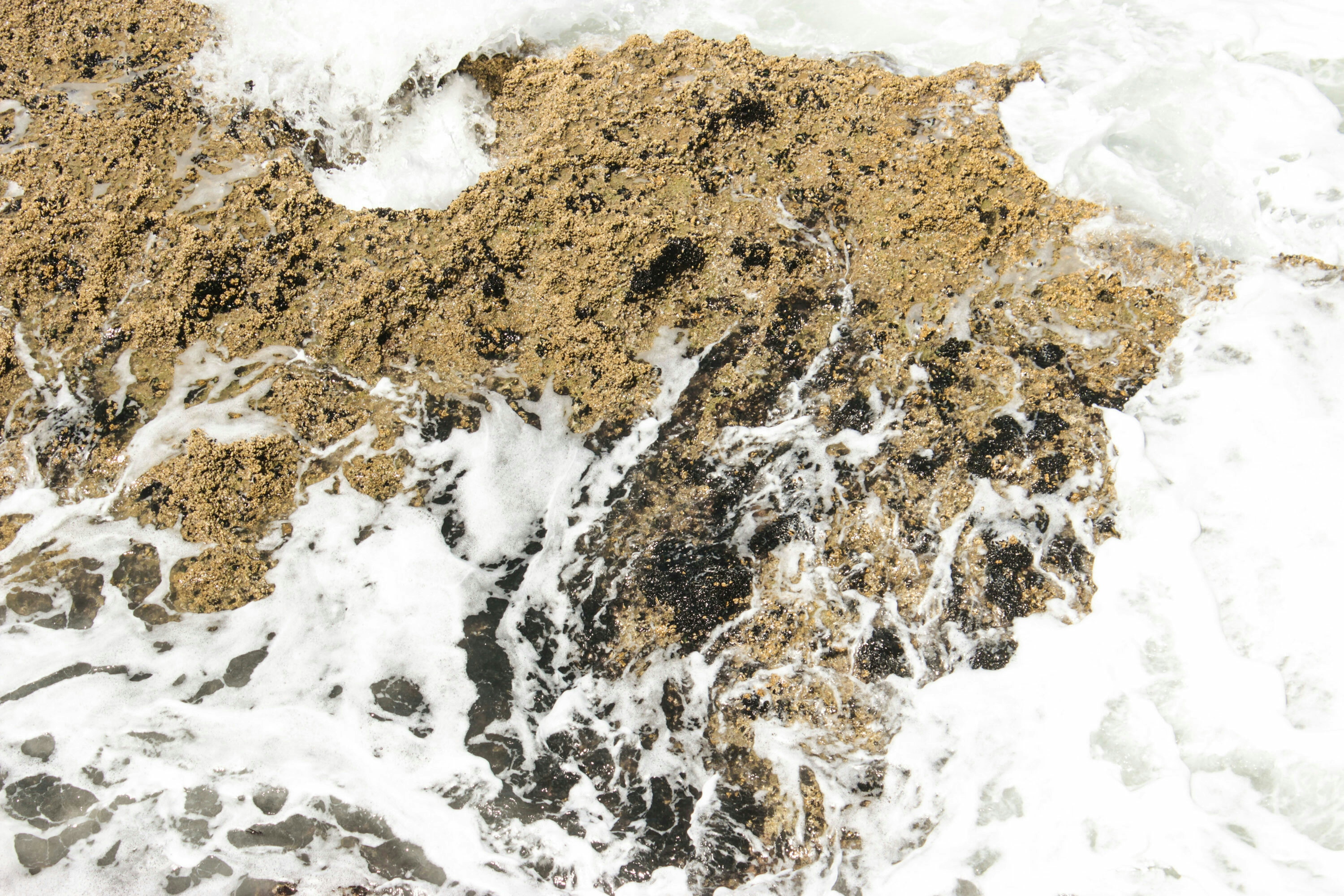
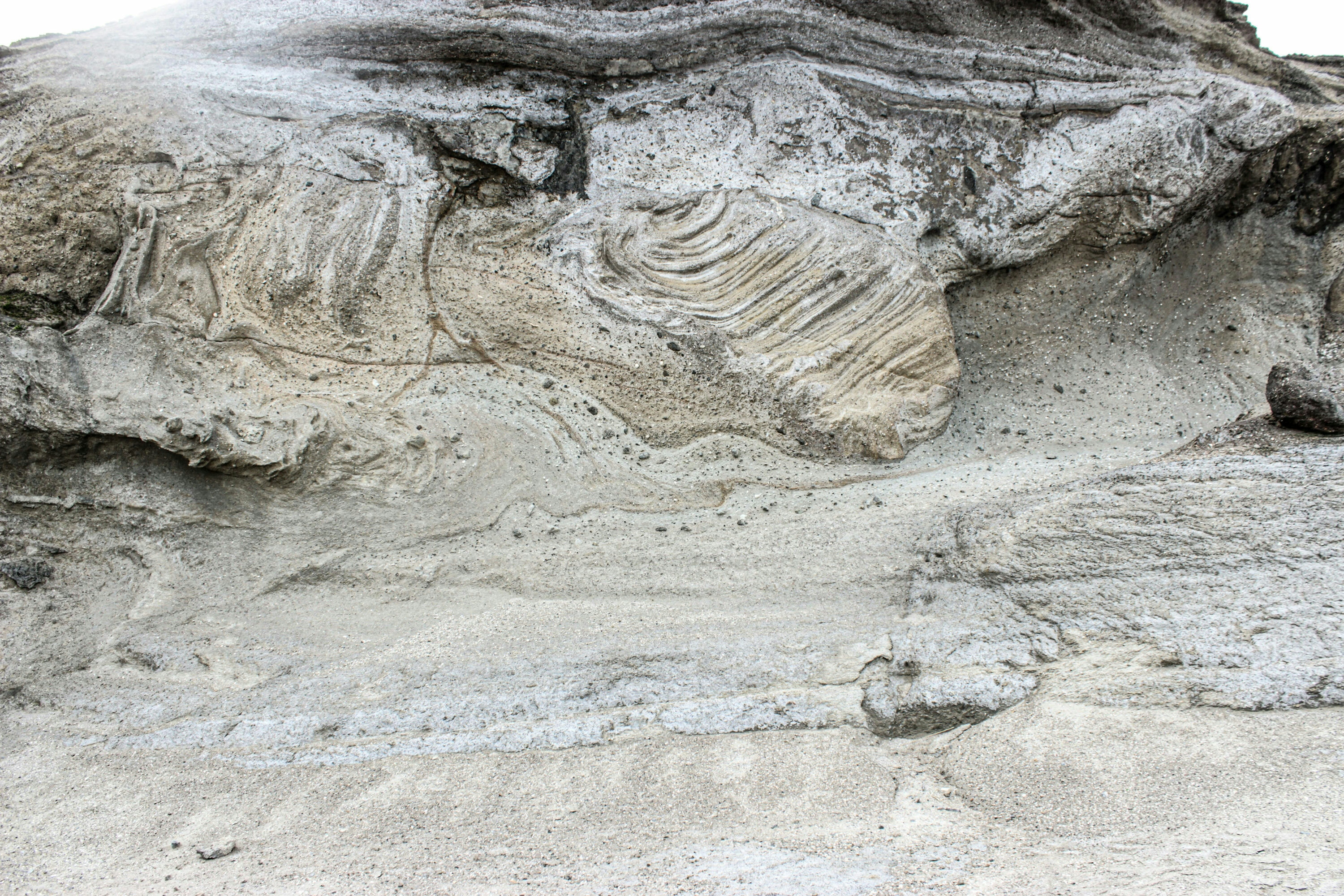
The journey starts with a sweeping sandy beach and a freshwater wetland that is fed from the springs of the Remutaka hills. Swathes of spring flowering toe toes grow through a mix of other reeds and sedges. Plants that thrive here are on the cusp between salt water sprays from the sea, and fresh water pooling, where roots are submerged for long periods of time.
Plant species that are adapted to water inundation, are also typically adapted to periods of dry spells, accommodating for the changing seasons.
Austroderia toetoe is frequently found around the Wainuiomata coast, growing in freshwater wetlands or sand dunes, demonstrating its adaptability.
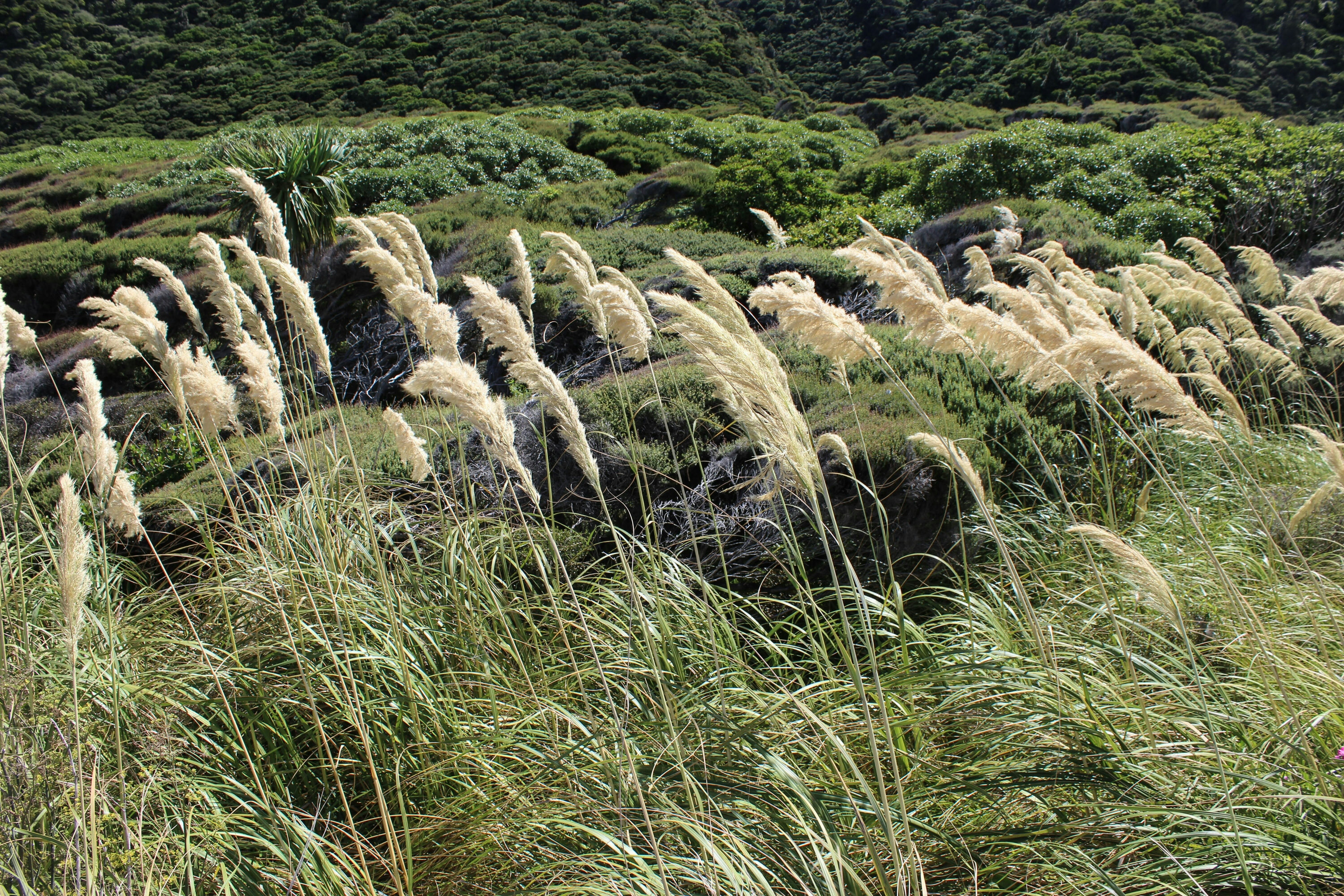
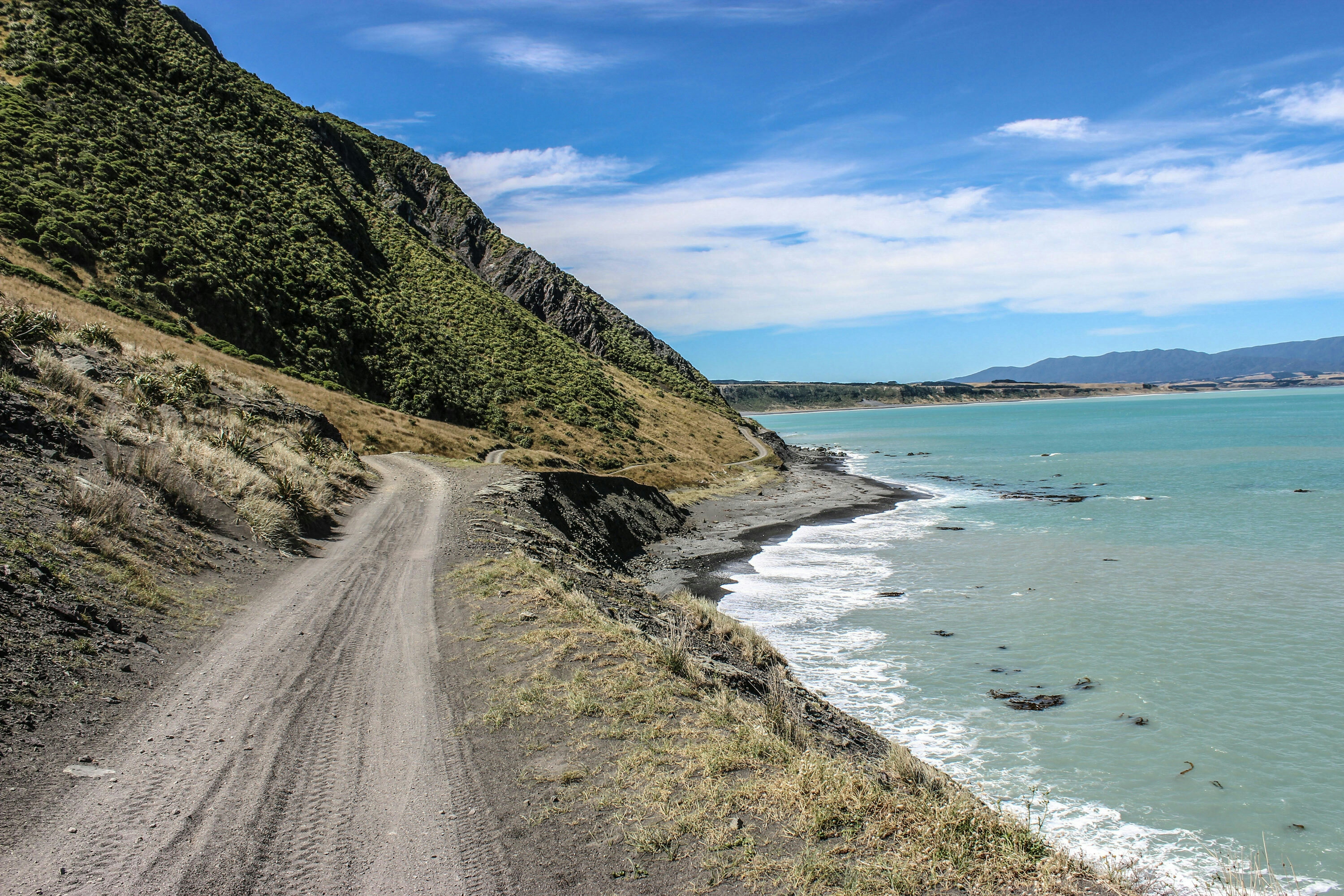
Moving up into the rolling hills and rocky cliff faces, plant life is more exposed to the harsh coastal elements and risk of erosion. The hill sides are covered with Wharariki – the mountain/coastal flax. Phormium cookianum is more suited to the coast over its cousin, harakeke, as it tolerates drier conditions and grows quite happily perched on a steep mountain side or coastal cliff. Wharariki, like its cousin harakeke, is valued for its used in raranga (weaving) particularly for whāriki (mats) as its similar name suggests.
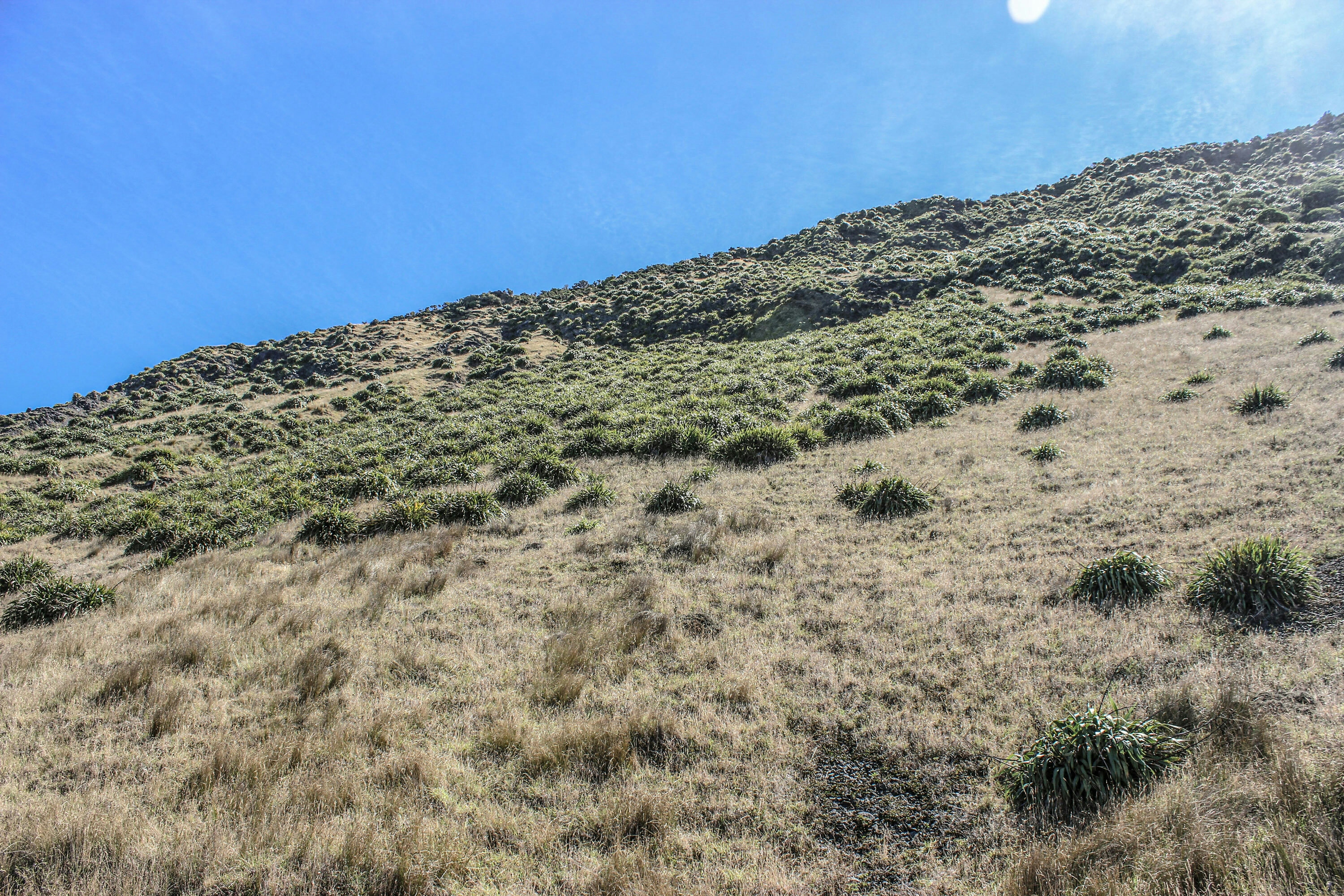
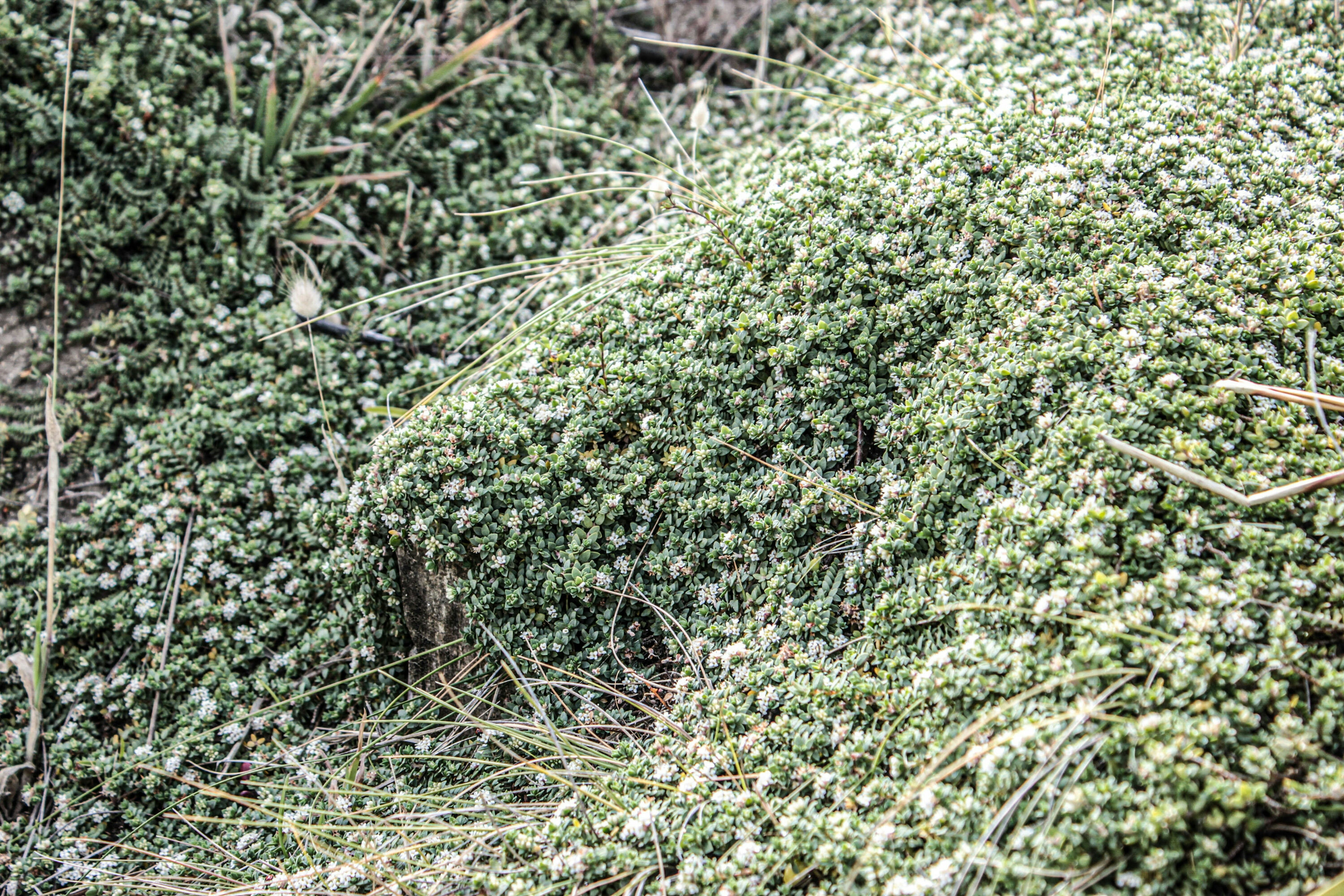
Other hardy plants we may encounter on steep, and rocky land have developed a knack for survival. Some develop tomentose – tiny hairs - that catch and retain moisture such as Pimelea prostrata & Lagurus ovatus; some do not require as much nutrients from the soil and can hang from cliff faces with their aerial roots, such as Griselinia lucida ; some may spread their roots underground - Rhizomes - to help with colonising, such as Apodasmia similis.
Because these plants, along with others, have higher tolerance to drier and windier conditions, they are perfect coastal dwellers and do their part in supporting their environment, along with other lively beings.


As we venture through dismantled hills we find hints of wind and salt-resistant scrublands. Native trees bend over significantly surrendering themselves to the prevailing wind.
On the coast we typically see stunted growths, and abnormalities in form caused by strong, salt-laden winds. This comes with its own beauty, though shelter is important to help aid for good plant growth.
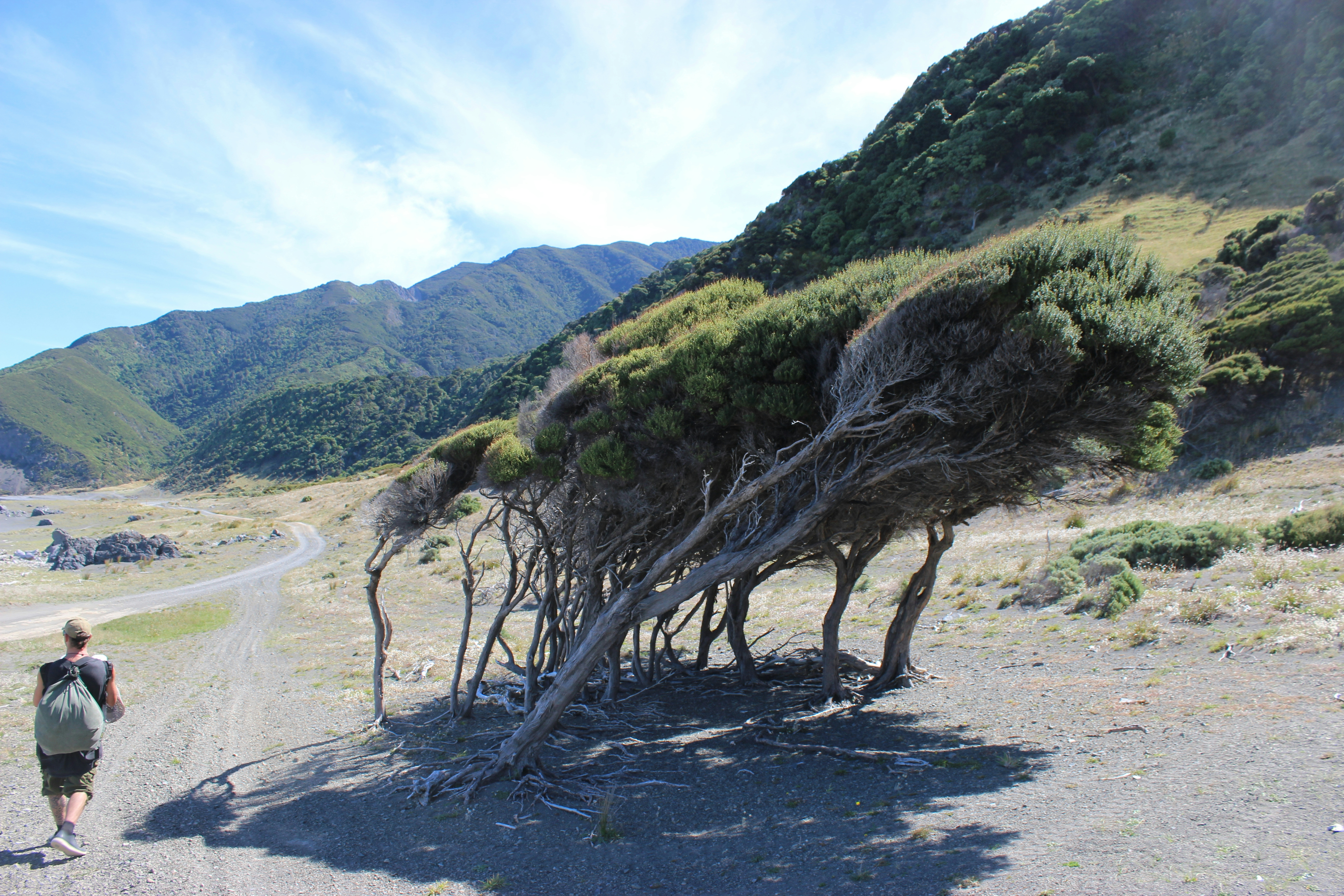

Further into Palliser Bay, there is shelter in scrubland resulting in abundant diversity in plant life. Here you will find a rich number of divaricating shrubs with the likes of Coprosma crassifolia, Coprosma propinqua, Coprosma rhamnoides, Olearia solandri and Muhlenbeckia astonii to name a few. Old, native Broad leaf and evergreen trees are dotted throughout, providing much needed shelter, with the likes of Griselina lucida, Kohekohe, Karaka, and Ngaio to name a few.
This scrubland houses a happy family of billy goats who were kind enough to say hello.
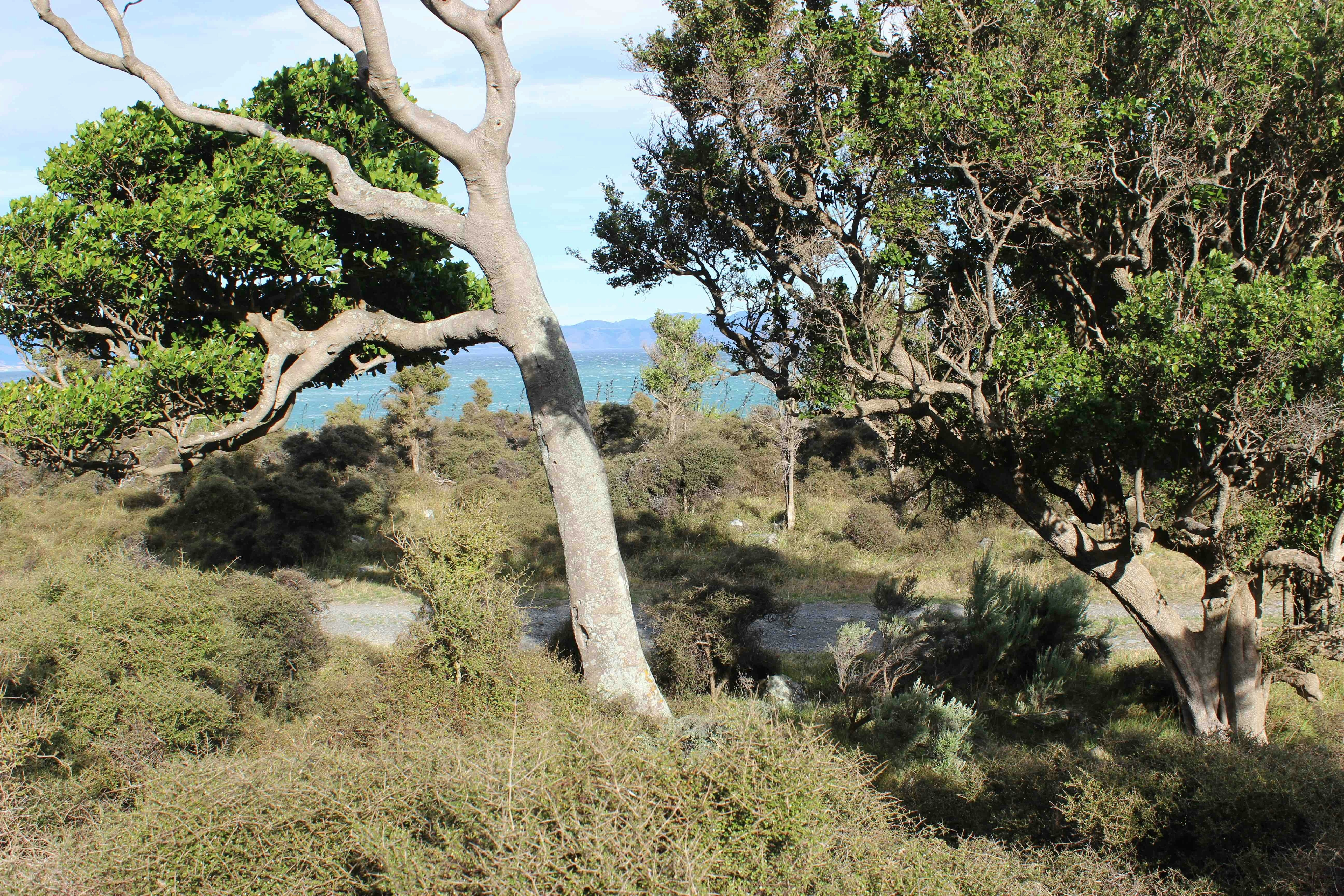
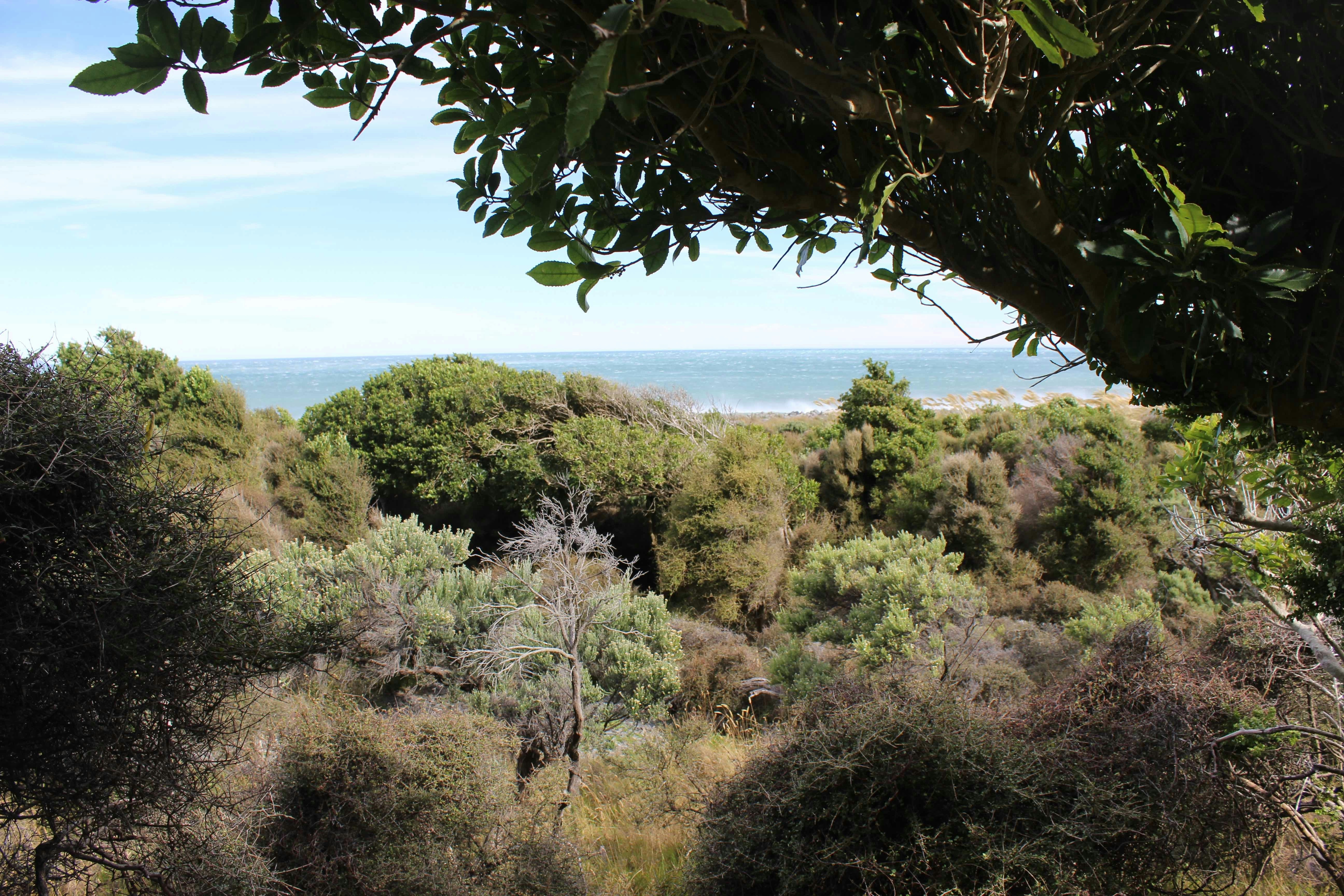
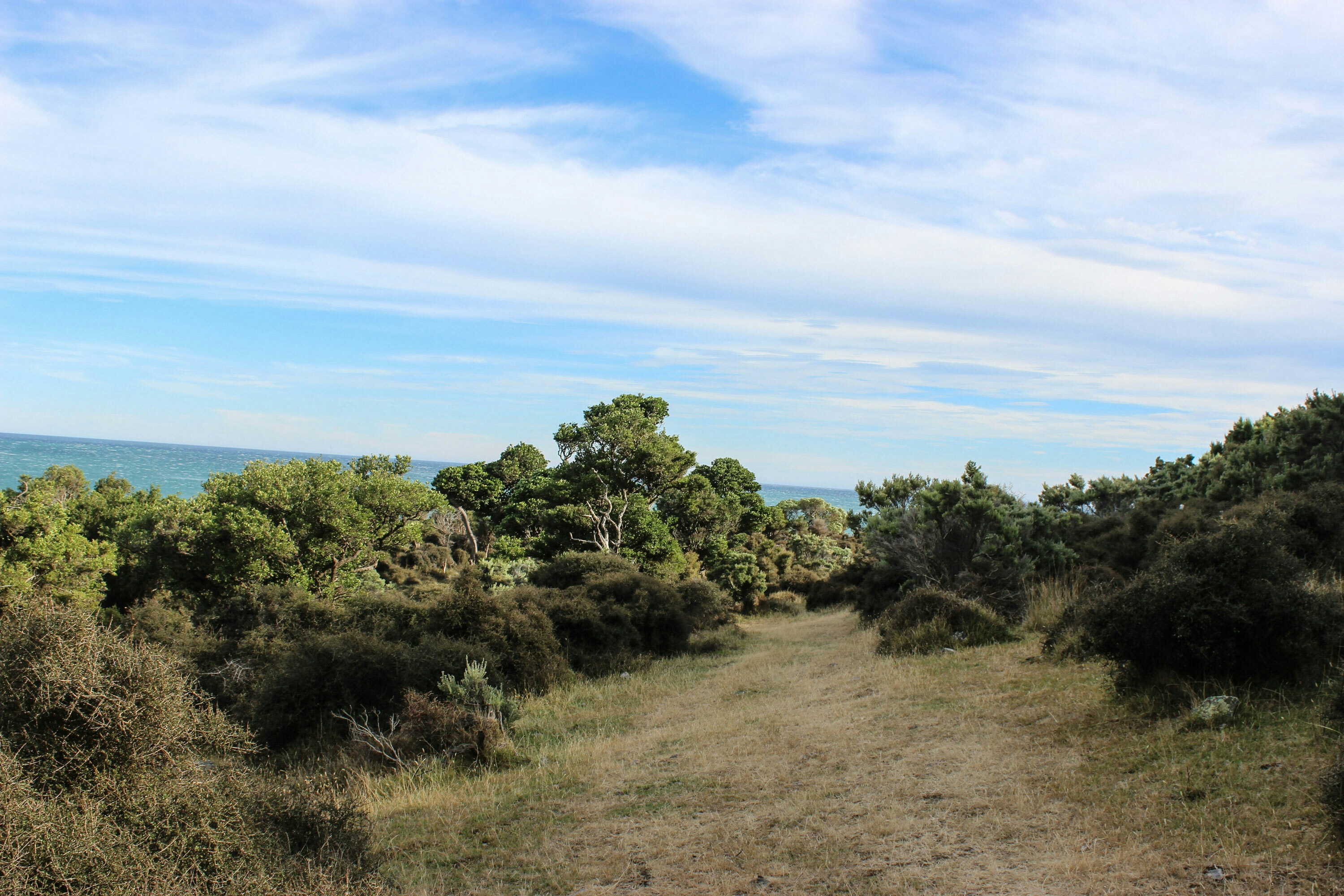
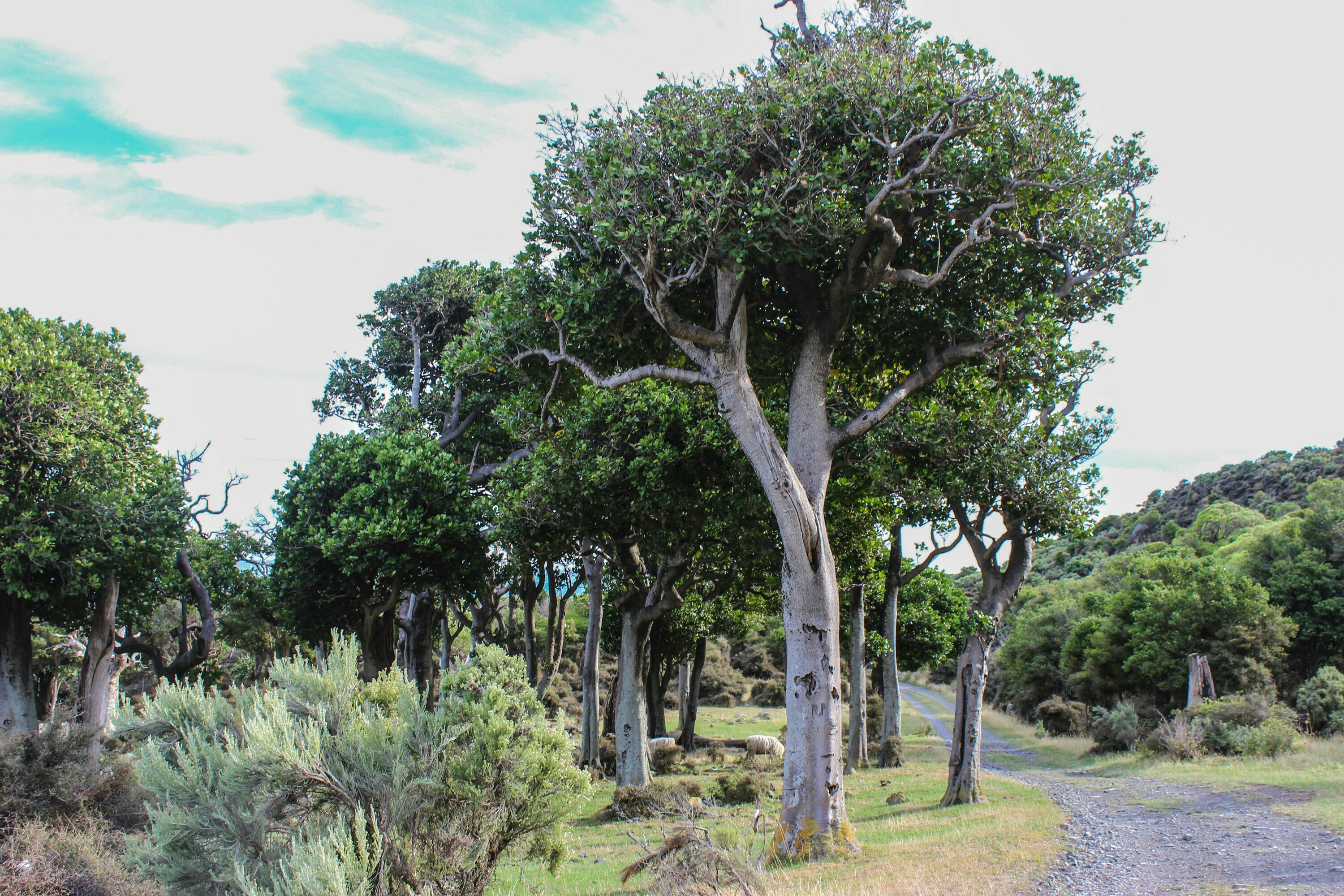
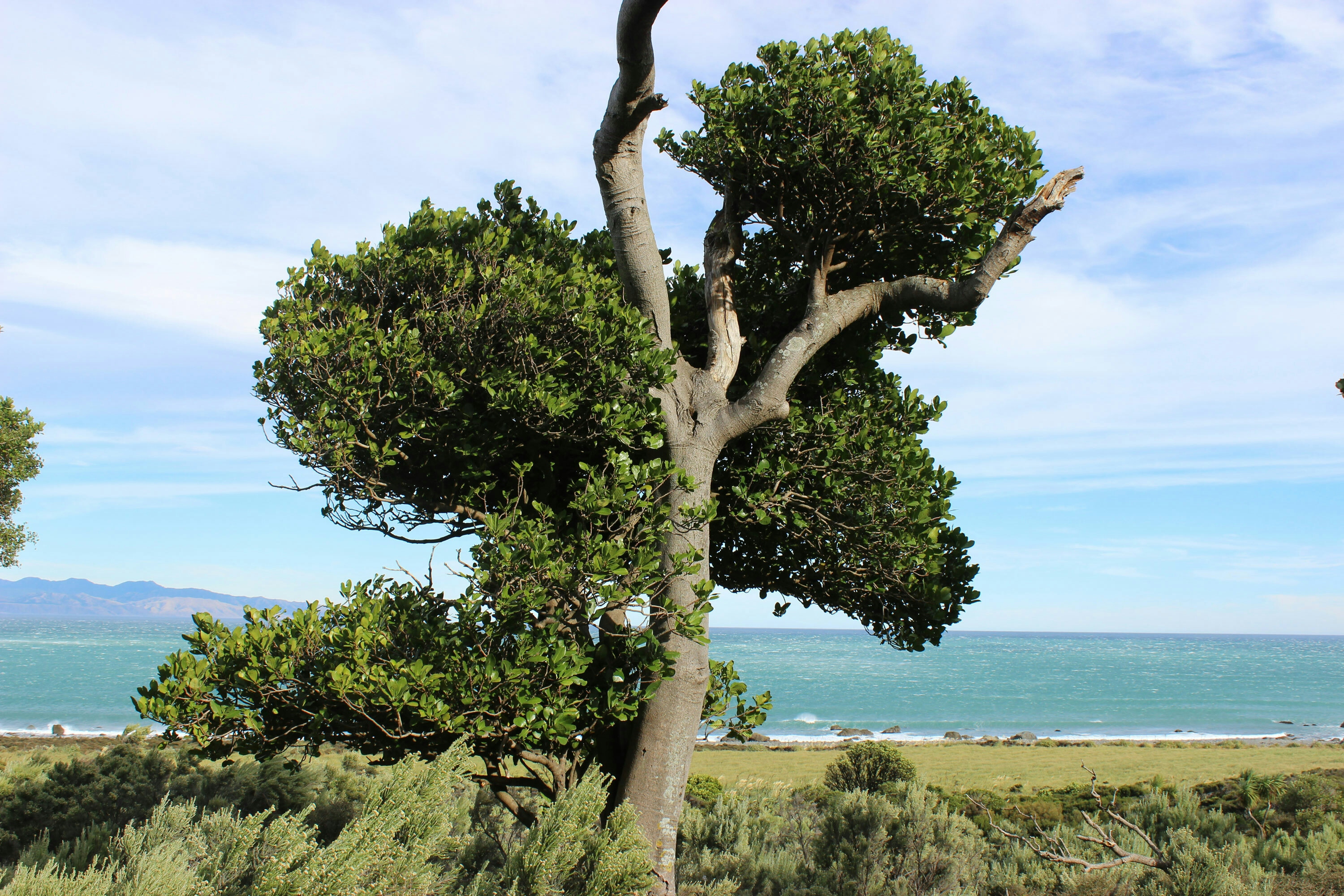
Stunning native trees and scrubland are encountered at every turn, manicured by the wind.
Making it past the headland, we are greeted by Turakirae coastline and its drastically changed environment, where the wind feels like a slap in the face. Tī kōuka (Cabbage tree) and divaricating ground cover carpet the land. Tī kōuka trees are very versatile in New Zealand though one thing that helps them in a high wind environment is their thick and tough cork-like bark, and huge fleshy taproots that anchors the tree firmly into the ground. Tī kōuka are also a great colonising species, growing happily on bare ground or exposed places.
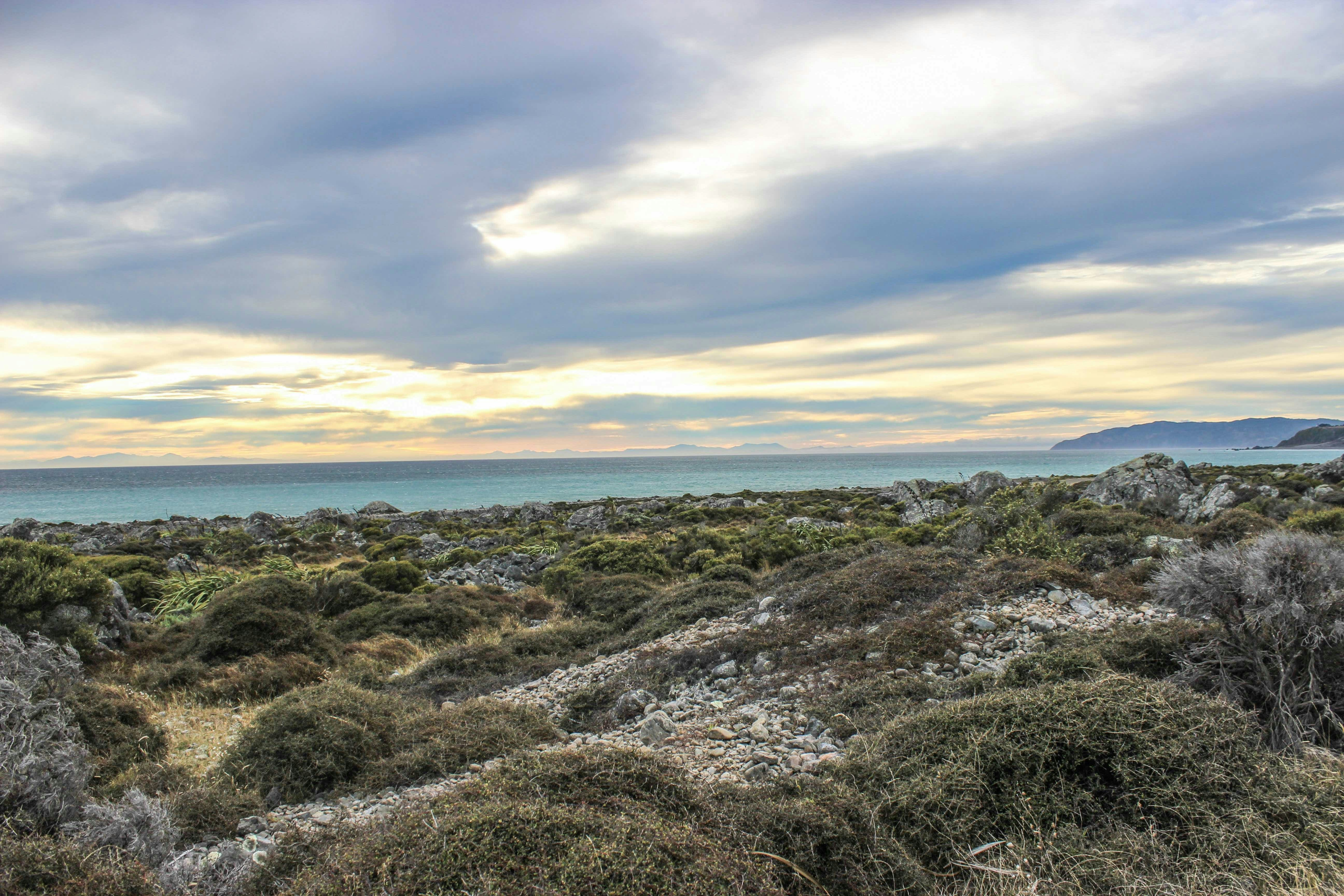
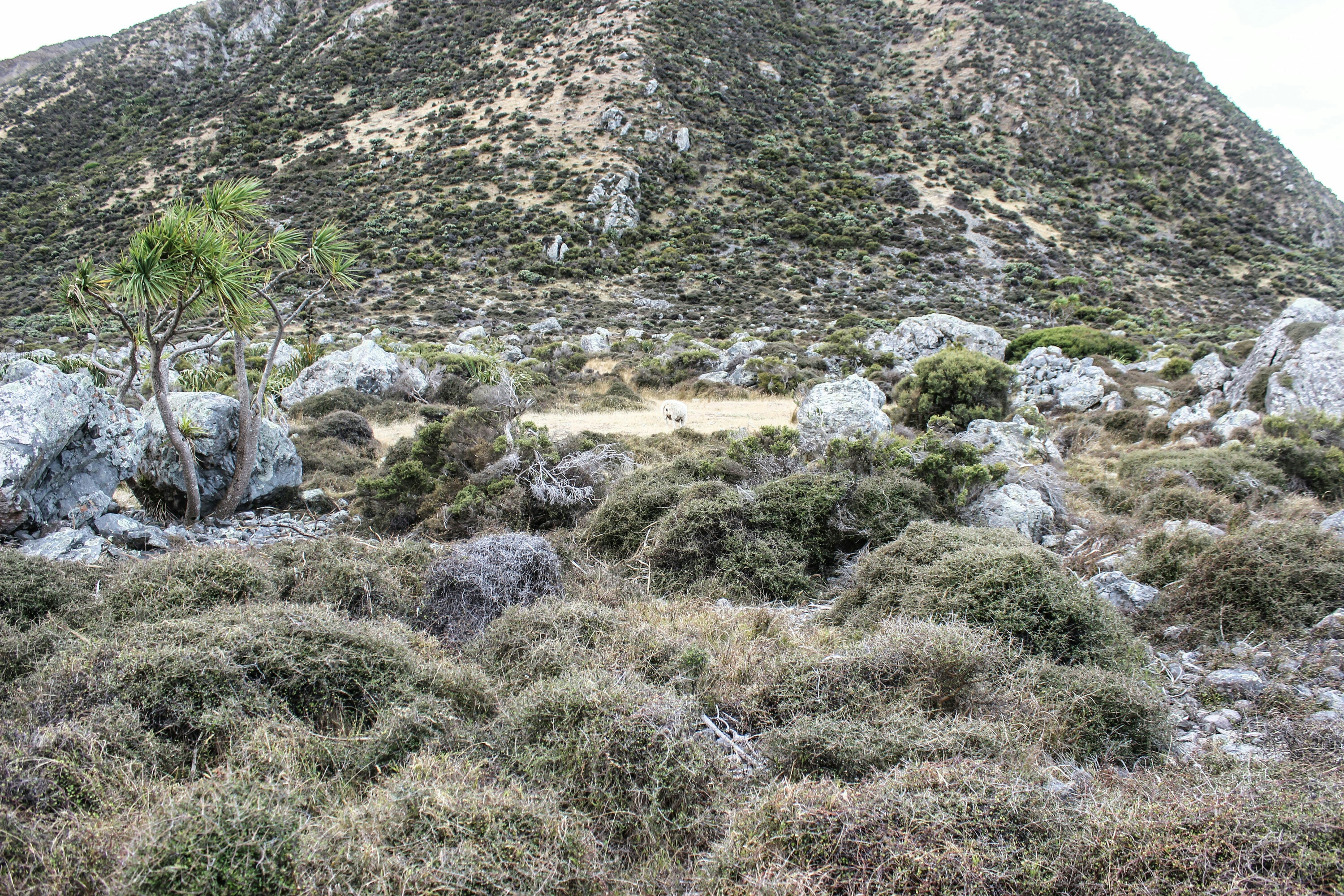
Divarication on the other hand, is another tactic against the wind. It is thought to be a protective mechanism, where the leaves are tucked inside and therefore less prone to moisture loss from high winds. Divarication is a growth form characteristic of many New Zealand plants where the leaves tend to be small and the stems grow in an interwoven manner. Boulders provide crevasses for smaller drought tolerant plants seeking shelter.
This sparse, rustic land was full of texture. A landscape so prone to elemental architecture with varying textures on the coast is inspiring.
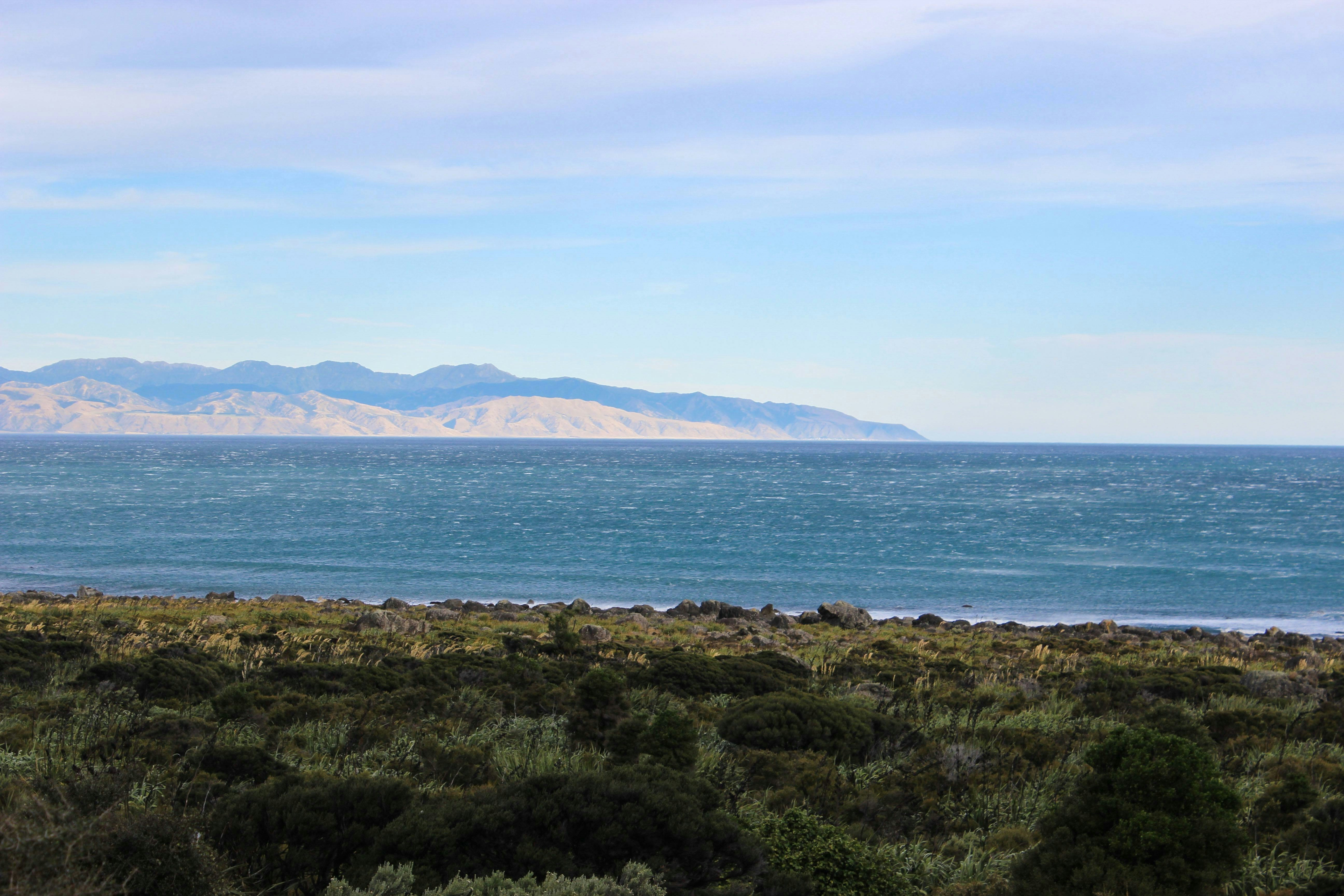
The land opens onto sand dune communities, where drought tolerant grasses and shrub life are inter-mingling.
With the Baring Head lighthouse in view, reaching this point offers the first window into the Wellington harbour, with the Miramar hills and southern bays in sight.
You can see awe-inspiring views over the Cook Straight where the South Island ranges lit up in the background!
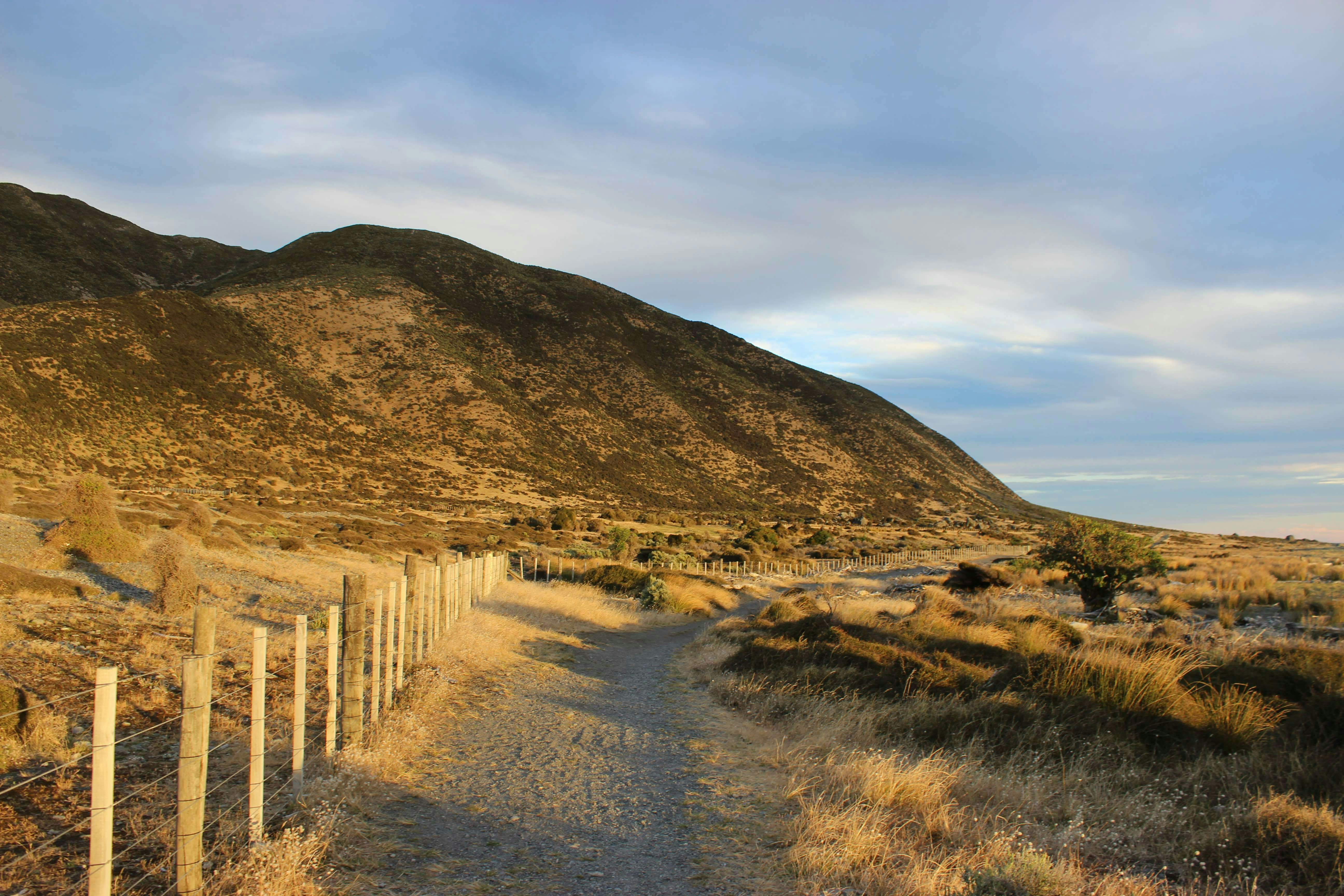
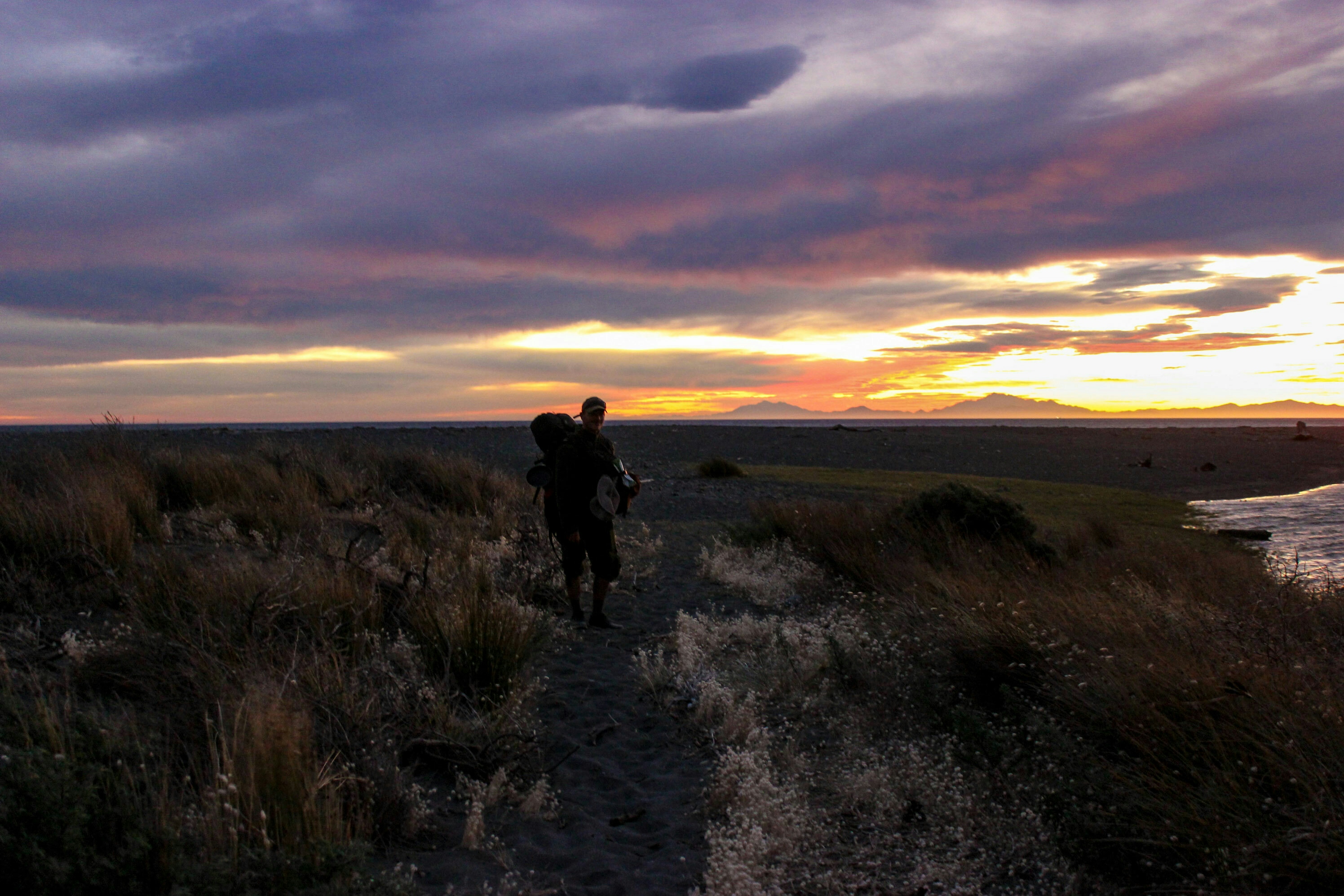
Furthering the last stretch of our journey toward Pencarrow Head lighthouse, the landscape feels more open. Making a big dip into Fitzroy Bay, we see stony beaches, rabbits roaming the scrubland and wetland communities near Lake Kohangatera and Lake Kohangapiripiri.
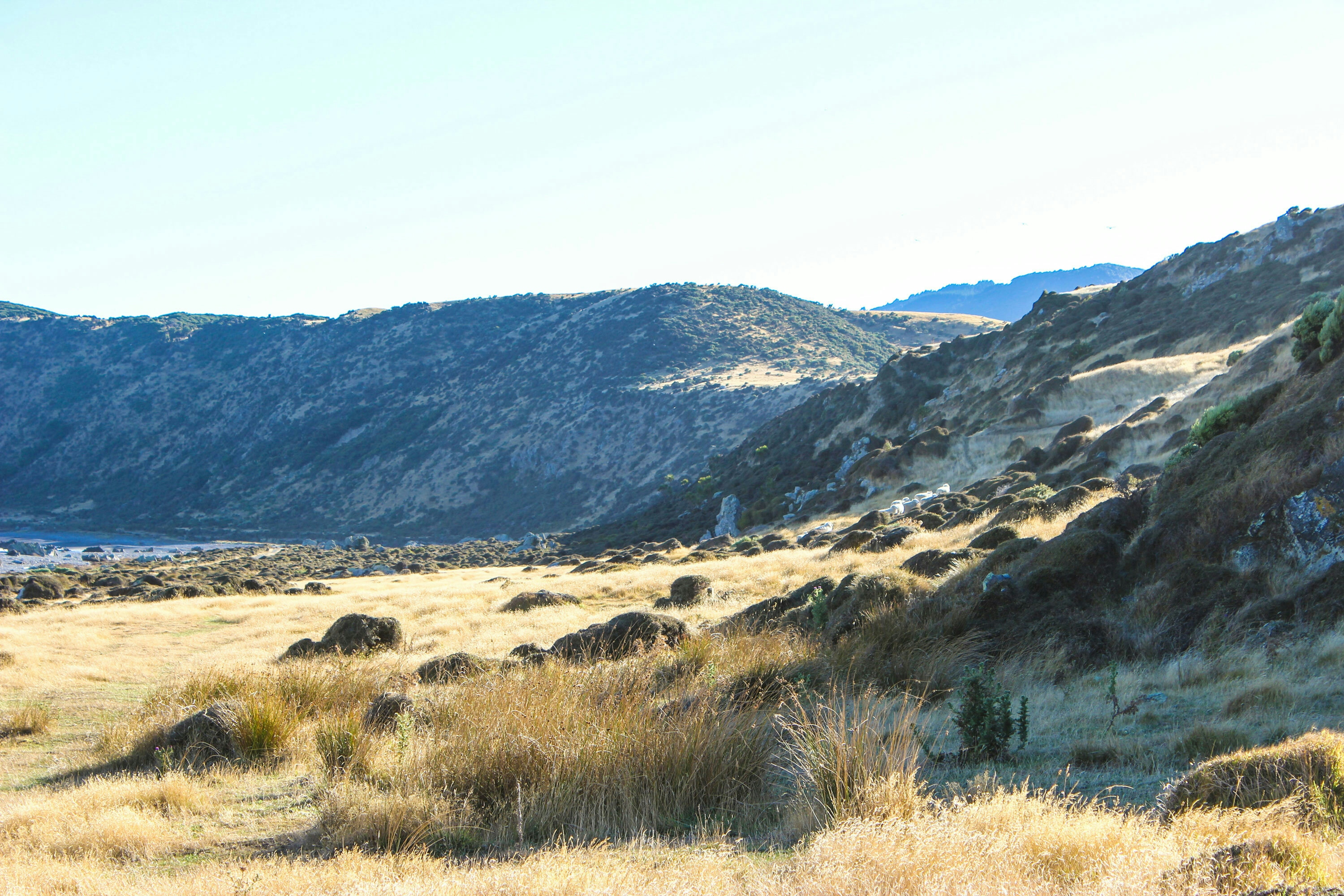
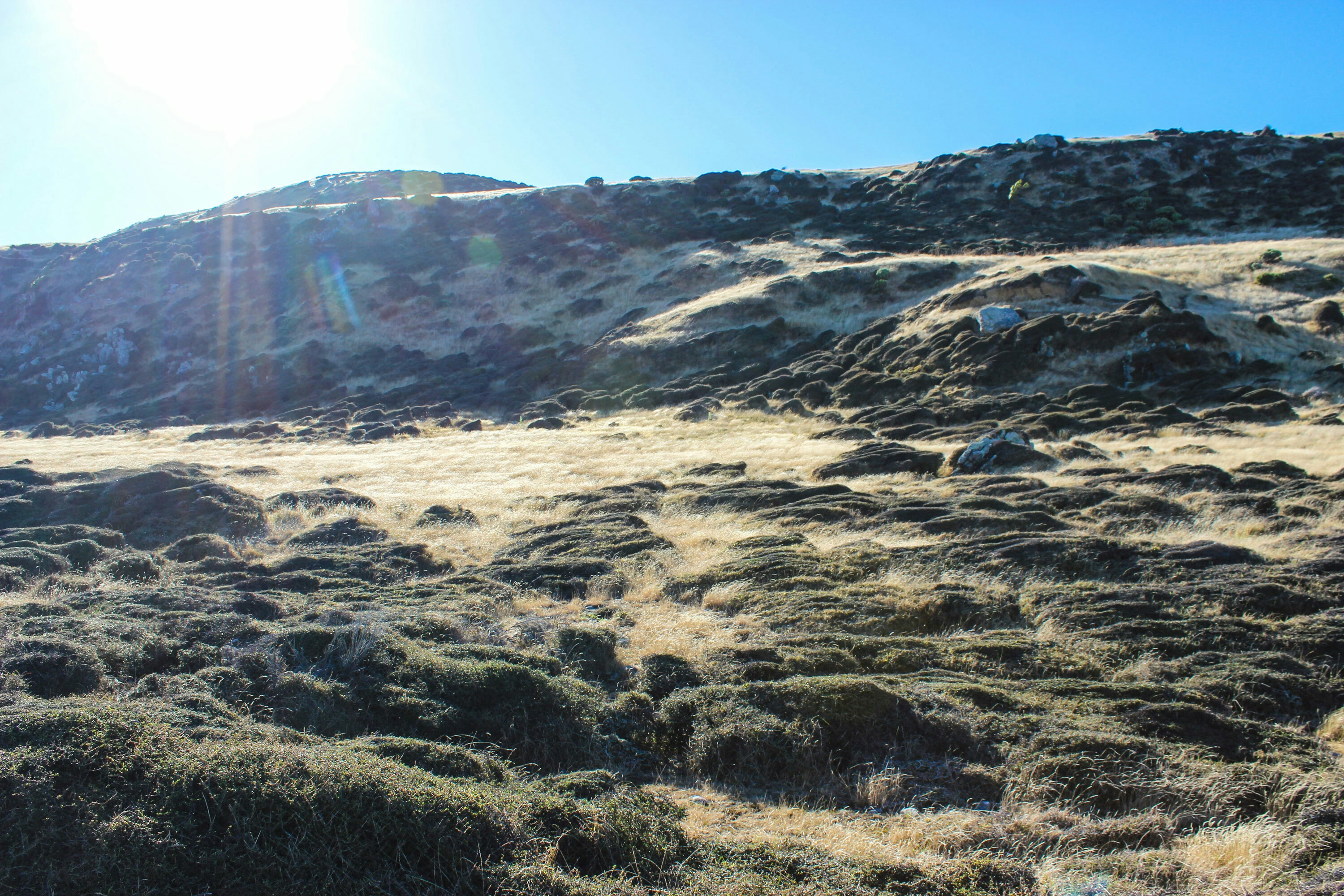
Moulded by harsh winds along with the impacts of human settlement, shows how resilient many of our native plants really are. This makes them amazing pioneers who have adapted to support their place of residence!
Exposing myself to the Wainuiomata coastal character has given me an extra level of appreciation for our native ecologies. A reminder that designing with native plants means much more than just the plants you choose, it is also about the area you are in and strengthening the links that hold our precious indigenous eco-systems together.
It becomes worthwhile to understand more about our local plant communities, so we are able to make conscious decisions about our approach to gardening locally, or to help us appreciate why we garden in the first place.
To check this out for yourself see the links below. Remember to leave nothing but footprints and take nothing but memories.
https://www.huttvalleynz.com/visit/wainuiomata/
https://www.doc.govt.nz/parks-and-recreation/places-to-go/wellington-kapiti/places/turakirae-head-scientific-reserve/things-to-do/wild-coast-track/
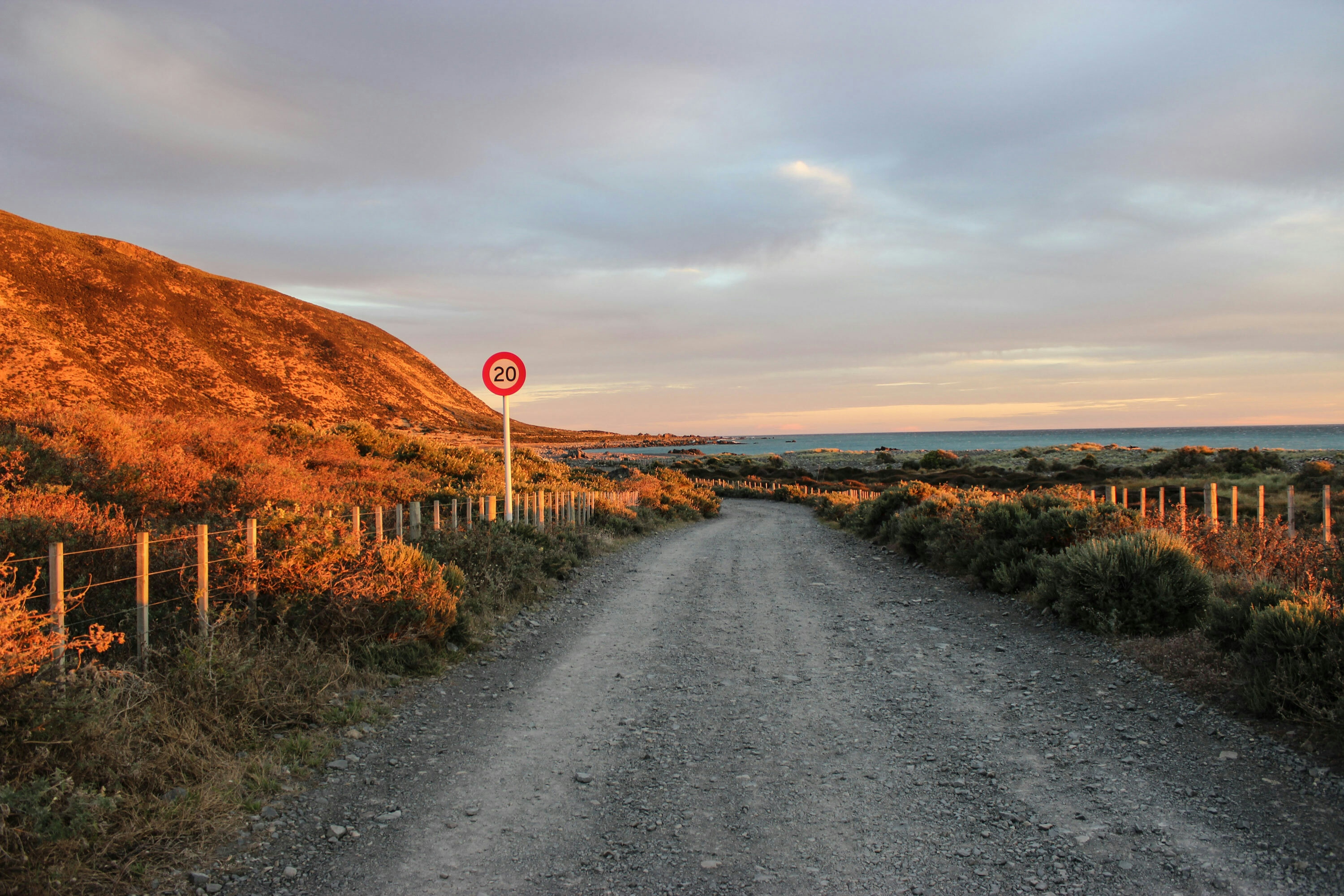
Join Our Newsletter
XANTHE WHITE DESIGN
Auckland Studio
Phone: 09 815 1187
Email: info@xwd.co.nz
XANTHE WHITE DESIGN
Wellington Studio
Email: wellington@xwd.co.nz